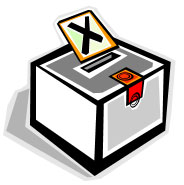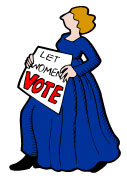

One of the great themes of American government is the steady expansion of suffrage, which means the right to vote. When the United States began, only white, male citizens who owned property could vote. Today, any citizen 18 years of age can vote.
The Constitution largely leaves the administration of elections and the registration of voters to the states. On their own, states gradually eliminated property requirements so that by 1850, almost all white male citizens could vote. Still, when it came to giving the franchise, which also means the right to vote, to women and minorities, eligibility could vary widely from state to state.

For example, before the passage of the 19th amendment that gave women the right to vote, almost every state in the West already let women vote. However, they remained completely ineligible in some states such as Florida, Pennsylvania, and Virginia. Southern states devised nefarious, seemingly race neutral criteria, such as paying an unaffordable poll tax, to deny African Americans the vote.
To respond to these problems and others, there are five amendments to the Constitution that expand access to the ballot box. In other words, nearly one-fifth of all 27 amendments to the Constitution deal with the franchise. They create a more uniform, non-discriminatory set of voter eligibility criteria.
Activity
The following timeline contains the years and amendments that expanded the right to vote. Using the copy of the amendments you downloaded in the previous section, drag each group to the appropriate year.
The 26th Amendment: Voting Age is 18
The 26th Amendment occurred in the midst of the Vietnam War when hundreds of thousands of 18 year-olds were drafted to serve in combat. People thought if they were old enough to die for their country, they should be old enough to vote.
→ Reflection: Although the voting age has been 18 for decades now, too few young people take advantage of it. The highest turnout ever for voters aged 18-29 was in 1972. 55.4 percent of eligible voters cast a ballot after passage of the 26th amendment. Why do you think young people don't vote and what can be done to change that? Answer using your notes.
Current Voter Eligibility Debate

In the United States, voting rights have now expanded to such a point that almost every citizen 18 and over can vote. The only major exception to this rule is people who have committed a felony, which is a serious crime such as grand theft or murder. As of 2010, only two states in the country allow felons to vote while serving their sentence in prison. By contrast, other countries including Canada, France, Germany, Japan, and Poland allow inmates to vote. In some states, depending on the crime, convicted felons lose the right to vote permanently, even after finishing all of the terms of their sentence. In Texas, a person has to have finished the term of his or her sentence, including any parole and court-ordered supervision or probation. States have started to become more lenient over time, but voter eligibility remains a contentious issue.